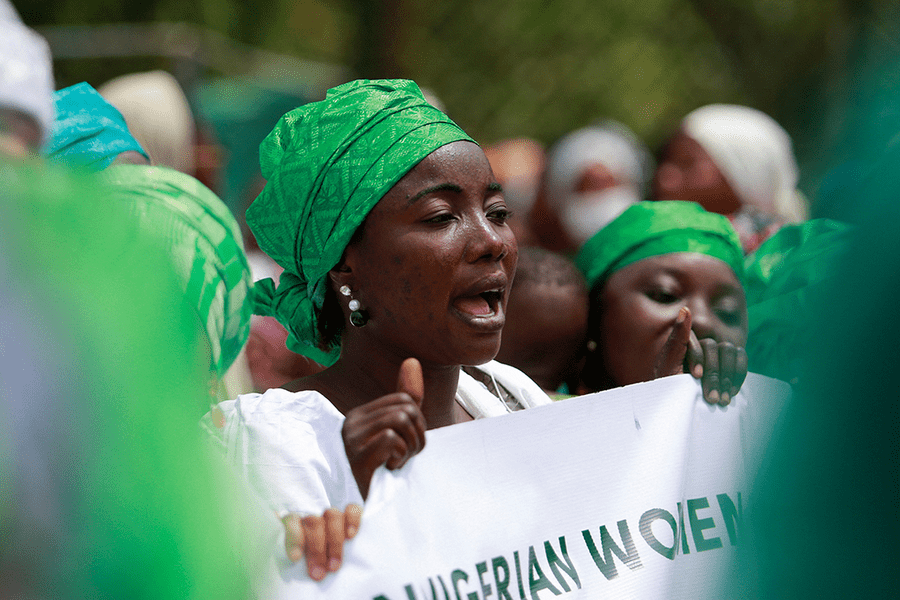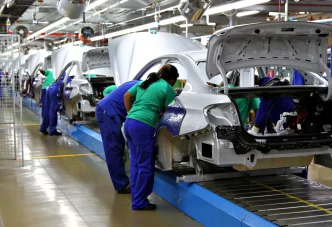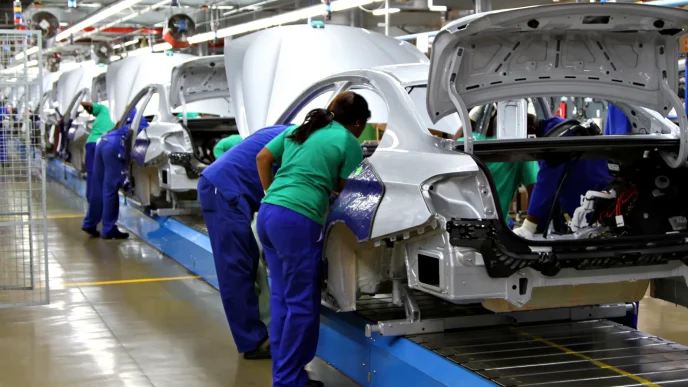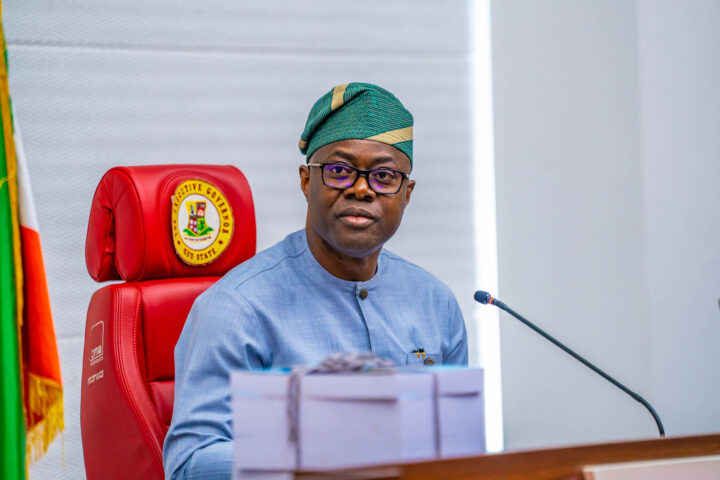BY LEKAN OLAYIWOLA
Nigeria’s aspiration of a $1 trillion economy is a referendum on whether the country can build inclusive, resilient growth. Yet, the lofty goal may be unreachable if women remain sidelined. Women’s economic exclusion isn’t just unfair, it’s an economic loss.
Across Nigeria’s six zones, women already hold the economy together: farming, trading, caregiving, peacebuilding, innovating. But their potential is stifled by state neglect, structural violence, and policy blindness. The missing trillion is not in oil reserves; it is in women’s unpaid, unseen, undervalued work.
The Economic Cost of Exclusion
Advertisement
According to the World Bank, closing Nigeria’s gender gap in labour force participation could add $229 billion to GDP by 2030. That’s nearly a quarter of the country’s current economic output.
Female labour force participation stands at 80.7%, nearly equal to men’s at 84.4%, yet women earn less, own fewer assets, and are locked out of formal credit. Only 9% of female-owned MSMEs have access to formal financing.
Using population estimates, labour force data, and GDP contributions by zone, we can estimate what Nigeria is losing annually by failing to fully unlock women’s labour.
Advertisement
North-west: Labour without Leverage
The North West is home to over 20 million women, many of whom sustain agriculture and informal trade in Sokoto, Zamfara, and Katsina. Yet literacy is barely 53.3%, maternal mortality is nearly 1,000 deaths per 100,000, and insecurity makes schools and markets unsafe.
Women here contribute significantly to the region’s agricultural GDP estimated at ₦5.2 trillion annually. But due to lack of access to extension services, credit, and secure markets, their productivity is suppressed. If even 30% of women’s agricultural labour were formalized and scaled, the region could unlock ₦1.5 trillion ($1.8 billion) in additional value annually.
Mobile vocational hubs, safe markets with community policing, and microcredit tied to women’s cooperatives must be prioritized to translate labour into leverage.
Advertisement
North-east: Recovery without Reintegration
In Borno, Yobe, and Adamawa, women drive post-insurgency recovery, running informal schools, caring for displaced families, and rebuilding social networks. Yet displacement severs education, trauma limits reintegration, and ministries lack trauma-informed programmes. UBEC grants for education sit idle, with ₦45.7 billion unaccessed nationally due to rigid matching rules.
The North East’s female labour force is underutilised in both the education and health sectors. If trauma-informed reintegration programmes enabled just 500,000 displaced women to re-enter teaching, caregiving, and community health roles, the region could gain ₦400 billion ($480 million) in annual productivity.
Accelerated learning for displaced girls, stipends for female-headed households, and rotational female teacher postings with secure housing are not charity, but economic recovery tools.
Advertisement
North Central: Peacebuilding without Protection
Benue, Plateau, and Niger host millions of women who farm, trade, and mediate conflict. Yet farmer–herder violence displaces families, disrupts markets, and halts girls’ education. State budgets fail to fund mobile classrooms or mediation hubs; women’s cooperatives are cut out of agricultural grants.
Advertisement
Women here are central to food production and local commerce. If land access reforms and transport vouchers enabled 1 million rural women to scale their farming and trade, the region could unlock ₦600 billion ($720 million) in added GDP annually.
Conflict-sensitive school calendars, land access reforms, and rural mobility protections are not just social interventions, but economic imperatives.
Advertisement
South-west: Innovation without Inclusion
Lagos, Ogun, and Oyo teem with women in trade, caregiving, and tech. Yet overcrowded schools, unpaid caregiving, and bias in funding keep them out of the formal economy. Budgets chase infrastructure, not social protection.
Advertisement
Women dominate the informal economy in Lagos, which contributes over ₦15 trillion to Nigeria’s GDP. If just 10% of informal female labour were formalized through tech incubators, para-teacher programmes, and employer incentives, the South West could unlock ₦1.8 trillion ($2.2 billion) annually.
Double-shift schools, gender-focused tech hubs, and employer tax breaks are not fringe ideas, but fiscal strategies.
South-east: Trade without Security
From Aba to Onitsha, women drive commerce, apprenticeships, and manufacturing. Yet fragile incomes pull girls out of school, credit is out of reach, and unsafe trade routes stifle mobility. Ministries ignore evening schools that working girls need.
Women’s trade networks in the south-east contribute an estimated ₦3.5 trillion to regional GDP. If microcredit and safe mobility expanded access for 500,000 female traders, the region could unlock ₦500 billion ($600 million) in new value annually.
Evening schools, credit tied to attendance, and community-police compacts aren’t just protective, but productive.
South-south: Resilience without Recovery
Bayelsa, Rivers, and Delta are rich in resources but poor in resilience. Women fish, farm, and rebuild after climate shocks. The 2022 floods closed 18 schools in Bayelsa, yet budgets had no flood-triggered disbursements. Adolescent fertility remains high at 86 births per 1,000 girls aged 15–19, compounding vulnerability.
Women’s labour in fisheries and agriculture contributes over ₦2.8 trillion to the region. Climate-smart training and maternal health stipends could unlock ₦400 billion ($480 million) in new productivity annually.
Flood-resilient classrooms, catch-up cycles, and maternal stipends are not emergency responses, but economic stabilizers.
Gender Inclusion as National Investment Strategy
Inclusion is not charity. It is an economic strategy. The World Bank’s projection of $229 billion in GDP gains from gender parity is not theoretical; it’s already visible in the zones where women are working without support.
Women own 43% of MSMEs, yet only 9% have access to formal credit. These numbers are not just statistics, but missed opportunities.
Nigerian women contribute, but institutions constrain. But a one-size-fits-all national policy cannot fix a multi-crisis map. State institutions often undervalue, underfund, and under protect women through budget neglect, poor planning, or outright exclusion.
A national dashboard that tracks female labour force participation by zone, gender-responsive budget allocations, crisis-triggered disbursements, and vocational and literacy outcomes for girls would allow policymakers, civil society, and citizens to see where the budget is working or failing.
Follow the Gendered Map
Until Nigeria’s budget learns to follow the map women already draw with their labour, resilience, and civic power, the $1 trillion economy will remain a dream deferred. Not because women aren’t working, but because the system refuses to work for them.
This is not a blank cheque appeal. It is a reprogramming of existing flows to track Nigeria’s real risk map. The existing Safe Schools financing plan could be used as the crisis window. The World Bank’s deprivation profile which identifies where learning losses are deepest could be used to weight transfers.
Women across Nigeria are not waiting to be empowered. They are already contributing, feeding families, building peace, running businesses, and teaching the next generation. What they need is not permission, but partnership. Not pity, but policy.
The next chapter of Nigeria’s economic story must be written with women at the centre—not as beneficiaries, but as builders.
Lekan Olayiwola, a peace & conflict researcher/policy analyst, can be contacted via [email protected]
Views expressed by contributors are strictly personal and not of TheCable.










